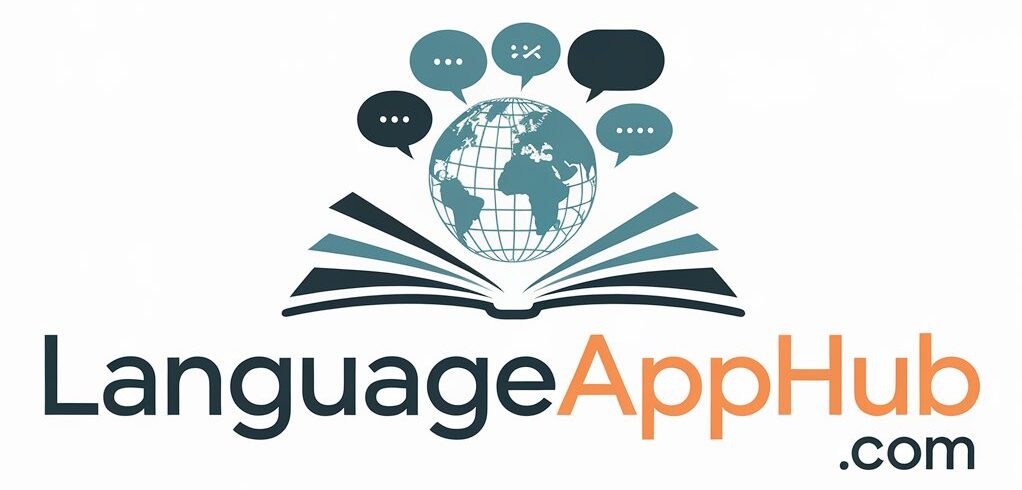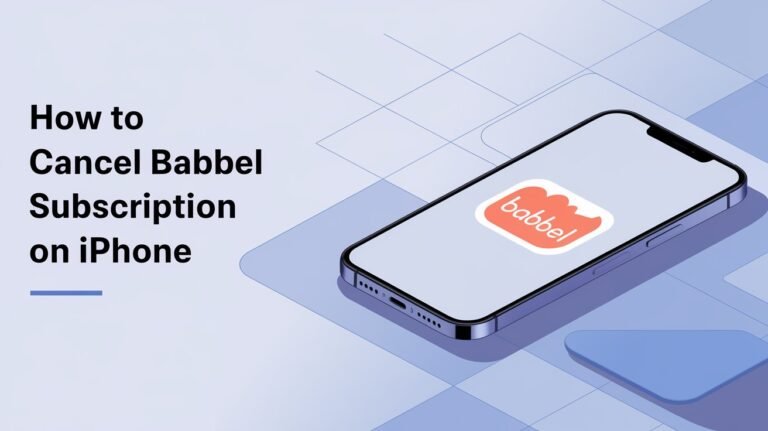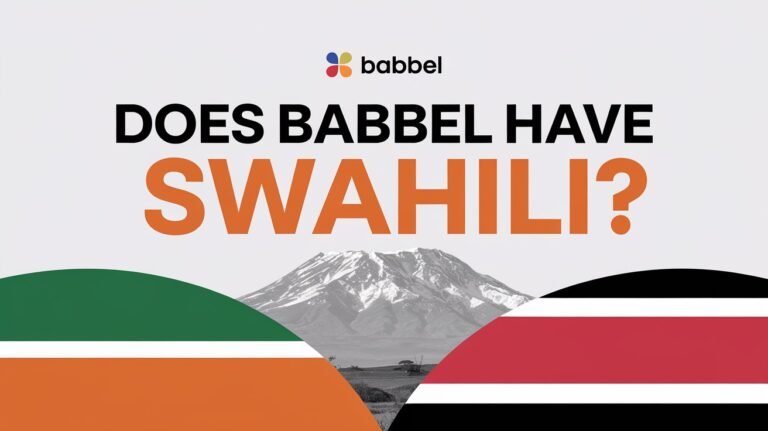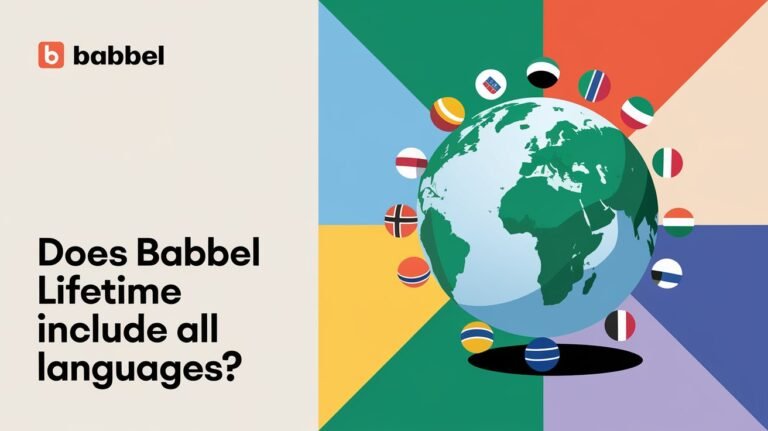Does Babbel Have Asl? Information You Need

Many are curious if Babbel, a popular language learning platform, offers American Sign Language (ASL) courses. ASL is a vital part of deaf culture, with its own unique grammar and vocabulary. It’s important to explore if Babbel provides ASL courses, making it easier to learn this visual language.
ASL is the fourth most-studied language in American universities. It’s estimated that between 100,000 to 15 million people speak American Sign Language in the United States. The lack of official statistics on ASL speakers shows the need for more resources and support for the deaf community. As ASL’s popularity grows, it’s natural to wonder if Babbel offers ASL courses to meet this demand.
Key Takeaways
- ASL is a unique and vital part of deaf culture, with its own grammar and vocabulary.
- Babbel is a popular language learning platform that may offer ASL courses.
- Estimates suggest between 100,000 to 15 million people speak American Sign Language in the United States.
- ASL is the fourth most-studied language in American universities.
- There is a growing demand for accessible ASL learning resources, including online courses and language learning platforms like Babbel.
- ASL courses on platforms like Babbel could provide an accessible way to learn this visual-gestural language.
Does Babbel Have ASL Courses Available?
Many people want to learn American Sign Language (ASL) through structured courses. Babbel, a well-known language learning site, offers many languages but not ASL. Let’s look at what Babbel offers and why it’s hard for platforms to teach sign languages.
Current Course Offerings on Babbel
Babbel teaches 13 languages when the teacher speaks English. These include Danish, Dutch, French, German, Indonesian, Italian, Norwegian, Polish, Portuguese, Russian, Spanish, Swedish, and Turkish. But, ASL is not one of them. This is common, as online learning for sign languages is tough due to their visual and gestural nature.
Platform Limitations for Sign Language
Online sign language teaching has big challenges. It needs visual tools and interactive lessons. Babbel is great for spoken languages but not for ASL. Sites like ASL Bloom do better, with over 120 video lessons and 1300 signs and sentences.
Visual Learning Requirements for ASL
Learning ASL focuses a lot on visuals. Students must learn complex handshapes, facial expressions, and body language. Platforms need to offer top-notch video lessons and tools for this. Even though Babbel doesn’t have ASL courses, it’s key to find platforms that do specialize in sign language.
| Platform | ASL Courses | Visual Learning Tools |
|---|---|---|
| Babbel | No | Limited |
| ASL Bloom | Yes | Over 120 video lessons |
American Sign Language Learning Platforms
Many ASL platforms have popped up as more people want to learn American Sign Language (ASL). These sites offer online courses, so you can learn ASL from home.
Popular sites include ASL Bloom, Lingvano, and Pocket Sign. Each has its own special features and prices. For instance, ASL Bloom has a free version and costs $98.99 a year to upgrade. Lingvano starts at $17.99 a month. Pocket Sign is $5.99 a month or $59.99 a year.
These platforms offer many benefits like flexibility, affordability, and easy access. They use fun tools like video flashcards and quizzes to help you learn. With over 500,000 deaf or hard of hearing people in the U.S., the need for ASL learning is growing. These sites are ready to help meet that need.
| Platform | Pricing | Features |
|---|---|---|
| ASL Bloom | $98.99/year | Spaced repetition, practice quizzes, sign bank |
| Lingvano | $17.99/month | Gamified learning, interactive exercises |
| Pocket Sign | $5.99/month | Video flashcards, practice quizzes, dictionary |
When picking an ASL platform, think about price, features, and what others say. The right platform can start you on a great journey in sign language. It can improve your communication skills and help you connect with the deaf community.
Digital Tools for ASL Practice
Practicing American Sign Language (ASL) is key to becoming good at it. Digital tools are a big help in this journey. There are many apps, online videos, and interactive sites to learn from.
These tools let learners improve their signing and learn more about ASL grammar and words. For example, sign language apps like ASL Dictionary have over 5,000 videos for you to watch. ASL Sign Language Pocket Sign gives you unlimited access to a video dictionary for just $5.99 a month or $59.99 a year.
Other apps, like Ace ASL and Baby Sign Language ASL Kids, make learning fun. They have quizzes and hand-tracking tech to check if you’re signing right.
Mobile Applications
- ASL Dictionary: over 5,000 videos for visual reference
- ASL Sign Language Pocket Sign: unlimited access to a video dictionary for $5.99 a month or $59.99 a year
- Ace ASL: engaging quizzes and hand-tracking technology to assess sign accuracy
- Baby Sign Language ASL Kids: over 200 signs for a one-time fee of $3.49
These digital tools help learners get better at signing. They also help understand ASL better and connect with the deaf community. Using these resources can make you more skilled in ASL.
Cost Comparison of ASL Learning Methods
Learning American Sign Language (ASL) can cost differently based on the method. We’ve looked at the prices of online courses, apps, and in-person classes to help you decide.
Online courses and apps like ASL Bloom and Rocket Sign Language are affordable. They offer subscriptions or one-time fees. For example, ASL Bloom uses spaced repetition and is easy for beginners. It has a subscription model. Lingvano, on the other hand, is more expensive.
In-person classes, like those on italki, are affordable. They offer personalized teaching at low rates. Here’s a table showing the costs of different ASL learning methods:
| Learning Method | Cost |
|---|---|
| ASL Bloom | Recurring subscription model |
| Rocket Sign Language | One-time payment |
| Lingvano | Overpriced |
| italki | Low hourly rates |
| The ASL App | $9.99 (includes future sign bundles) |
Choosing how to learn ASL depends on what you like and your budget. By looking at the costs and benefits, you can pick a method that fits your needs. This way, you can learn ASL without spending too much.
Time Requirements for ASL Proficiency
Learning American Sign Language (ASL) takes a lot of time. It can take between 6 to 12 months to get good at it. This depends on how much you practice and the quality of your lessons.
To start talking in ASL, you’ll need to practice every day for months. Getting really good at it can take a year or more. How fast you learn depends on how often you practice, your teacher’s quality, and how you learn best.
Basic Communication Skills Timeline
Here’s a rough guide to learning basic ASL skills:
- 1-3 months: You can learn simple words and phrases like “hello” and “how are you?”.
- 3-6 months: You’ll start to make simple sentences and have short conversations.
- 6-12 months: You’ll get better at making complex sentences and understand more.
Advanced Fluency Development
To get really good at ASL, you’ll need to practice a lot more. This includes:
- Practicing with a teacher or friend who knows ASL
- Watching TV shows and movies in ASL
- Going to ASL events and workshops
| Level of Proficiency | Time Requirement |
|---|---|
| Basic Communication Skills | 6-12 months |
| Advanced Fluency Development | 1-2 years |
Common Challenges in ASL Education
Learning American Sign Language (ASL) is rewarding but comes with challenges. Mastering the visual-gestural language is hard for those used to spoken languages. It’s also important to understand the deaf community’s cultural nuances for effective communication.
ASL learners face barriers like finding good teachers and getting hands-on practice. They also need to bridge linguistic and cultural gaps. To tackle these, learners can use online tools like video tutorials and practice exercises. They can also join local events and gatherings to connect with the deaf community.
Some common challenges in ASL education include:
- Linguistic barriers, such as differences in grammar and vocabulary
- Cultural barriers, such as understanding deaf culture and community norms
- Access to qualified instructors and immersive learning experiences
By tackling these challenges and seeking help, learners can master ASL. With dedication and practice, they can communicate well in ASL and connect with the deaf community.
ASL Certification Requirements
To become a certified ASL instructor, you need to meet certain standards and have the right education. Getting certified is key to ensuring quality teaching and growing the language. You’ll need education, training, and experience to get certified.
Important requirements include knowing ASL well, understanding deaf culture, and being a good communicator. You also need to keep learning and growing professionally. The National Association of the Deaf (NAD) and the American Society for Deaf Children (ASDC) offer certification programs.
Professional Standards
Organizations like the NAD and ASDC set standards for ASL instructors. These standards cover education, training, and experience. They also include a code of ethics and cultural awareness.
Academic Credentials
Having a degree in ASL or a related field is crucial for certification. Many schools offer programs in ASL and deaf studies. These programs provide a solid base for teaching ASL. Training and certification programs also help ensure instructors have the right skills.
| Organization | Certification Program | Requirements |
|---|---|---|
| National Association of the Deaf (NAD) | Certified Deaf Interpreter (CDI) | Education, training, and experience in ASL and deaf culture |
| American Society for Deaf Children (ASDC) | Certified ASL Instructor (CAI) | Education, training, and experience in ASL and deaf culture |
By meeting these standards and having the right education, ASL instructors can teach well. Certification is a big step in a career as an ASL instructor. It helps build a strong foundation for teaching.
Local ASL Communities and Practice Groups
Joining local ASL communities and practice groups is a great way to dive into the language. You’ll meet native signers and make new friends. These groups often have events like workshops and meetups where you can practice and learn.
Looking for local ASL groups is easy. You can search online, check with local colleges, or look on social media. Try attending events like deaf coffee chats to meet others and find out about future events.
- Search online for local ASL groups and communities
- Check with local colleges or universities for ASL courses or clubs
- Look for events on social media or community calendars
- Attend local events, such as deaf coffee chats or ASL meetups
Getting involved in local ASL groups can really boost your skills. You’ll become more confident and fluent. So, why not start today and see how community learning can help you?
| Resource | Description |
|---|---|
| Local ASL groups | Meetups and gatherings for ASL learners and native signers |
| ASL courses | Classes and workshops to learn ASL |
| Deaf coffee chats | Informal gatherings for deaf and hard of hearing individuals |
Next Steps for Your ASL Journey
Congratulations on starting your American Sign Language (ASL) journey! Learning ASL is a lifelong adventure. Success comes from regular practice, joining the deaf community, and embracing ASL’s culture.
Set achievable goals for your ASL skills. You might aim for basic chats or advanced fluency. Find language partners online or locally for practice. Watch ASL vlogs, movies, and educational content to improve your skills.
The deaf community welcomes you with open arms. Go to ASL meetups, workshops, or cultural events. This will boost your language skills and help you understand deaf culture better.
Keep learning and stay committed to your ASL journey. With time and effort, you’ll become confident in ASL. You’ll make strong connections and join the vibrant ASL community.






